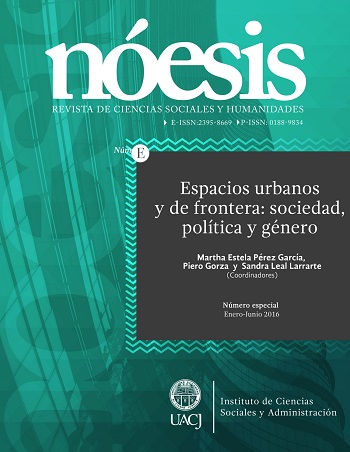Situación del adulto mayor como usuario de Internet, en relación a su red personal primaria, con parientes migrantes en Quindío- Colombia
Contenido principal del artículo
Resumen
El presente artículo hace parte de las reflexiones de las autoras a partir de los resultados de la investigación denominada: Internet y Red Personal del Adulto Mayor con parientes migrantes, realizada en Armenia-departamento del Quindío, caracteriza la situación que enfrenta el adulto mayor en el manejo del internet, para comunicarse con sus parientes migrantes. El proyecto identificó las modificaciones en la comunicación por el uso de Internet, en cuanto a características estructurales, funciones de los vínculos y atributos de los vínculos. Los teóricos que acompañaron la estructura epistemológica para la interpretación de la recolección de la información fueron: Garay (2006), Cárdenas y Mejía (2006), (Castells, 2009), Marc Prensky (2001), (Machado, 2000), Tovar y Villarraga (2009). La metodología utilizada fue; el estudio etnográfico- cualitativo, la entrevista semiestructurada para total de (100), el muestreo discriminado y para la organización e interpretación de la información se acudió a la Teoría Fundamentada de Strauss y Corbin, (2002).
Descargas
Detalles del artículo

Esta obra está bajo una licencia internacional Creative Commons Atribución-NoComercial-CompartirIgual 4.0.
Citas
Cárdenas, Mauricio y Carolina Mejía. 2006. Migraciones internacionales en Colombia: ¿qué sabemos?. http://www.iadb.org/intal/intalcdi/PE/2009/02989.pdf. (14 de abril de 2011).
Castells, Manuel. 2009. Comunicación y poder. Madrid: Alianza Editorial.
Castells, Manuel. 2005. La era de la información, la sociedad red. Madrid: Alianza Editorial.
Machado, Arlindo. 2000. El paisaje mediático. Sobre el desafío de las poéticas tecnológicas. https://soloyovideo.files.wordpress.com/2013/02/machado-arlindo-el-paisaje-mediatico.pdf. (1 de Mayo de 2014).
Madarriaga, Camilo; Raimundo Abello, y Omar Sierra. 2003. Redes sociales. Infancia, familia y comunidad: Barranquilla: Universidad del Norte.
Martínez, Miguel. 1991. La investigación cualitativa etnográfica en educación: manual teórico-práctico. Caracas: Litexsa Venezolana.
Narváez, Ancízar. 2002. Puentes tecnológicos, abismos sociales. Manizales: Centro de publicaciones Universidad de Manizales.
Prensky, Marc. 2001. Digital natives, digital immigrant. On the Horizon 9 (5):1-6. http://www.marcprensky.com/writing/Prensky%20-%20Digital%20Natives,%20Digital%20Immigrants%20-%20Part1.pdf. (20 de abril de 2012)
Sluzki, Carlos. 1996. Red social: frontera de la práctica sistémica. Buenos Aires: Editorial Gedisa.
Soto, Olga; Joaquín Montero y Carlos Sánchez. 2006. Comunicación y redes sociales. Herramientas de software libre para afrontar el reto migratorio. Ponencia presentada en el 2º. Encuentro en Línea de Educación y Software Libre. (1 de 2009).
Strauss, Anselm, y Julieth Corbin. 2002. Bases de la investigación cualitativa. Técnicas y procedimientos para desarrollar la teoría fundamentada. Bogotá. Colombia. (2a. ed.).CONTUS-Editorial Universidad de Antioquia.
Tovar, Adriana y Catherine Villarraga. 2009. Inclusión de las NTC en la mediación social de los adultos mayores como usuarios virtuales. Trabajo de Grado. Universidad Sergio Arboleda. Bogotá. http://www.usergioarboleda.edu.co/investigacion-comunicacion/documentos-_edicion_1/adultos-internet.pdf. (20 de mayo de 2013)

